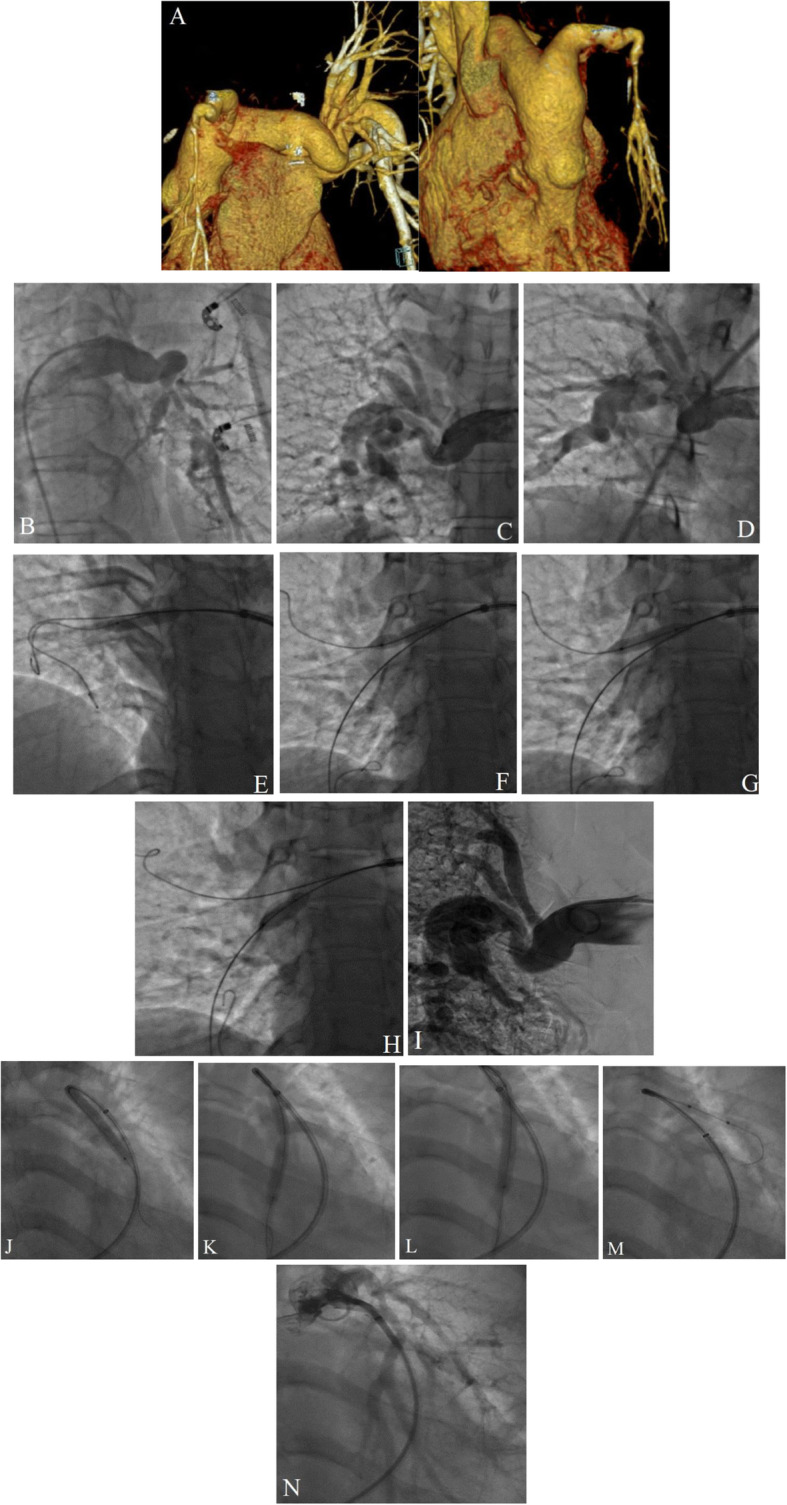Fig. 1.

(A) The images illustrate a pulmonary computed tomography angiography, showing bilateral peripheral pulmonary artery stenosis. (B, C, and D) The images illustrate the left pulmonary artery injection, showing significant stenosis in the upper, middle, and lower branches (B). The right pulmonary artery injection reveals severe stenosis in the upper and lower lobar branches (C and D). (E, F, G, H, and I) In the first session, through a long delivery sheath and a NaviCross Support Catheter, the lower and middle branches of the right pulmonary artery are wired with 0.014-in coronary wires. They are then replaced with Amplatz Super-Stiff guidewires. Balloon percutaneous angioplasty is performed on the lower lobar branch of the right pulmonary artery (E). Afterward, sequentially, balloon percutaneous angioplasty is carried out on the middle segmental branch (F and G) and the lower segmental branch (H) successfully with a mild residual stenosis (I). (J, K, L, M, and N) In the left pulmonary artery, primary balloon percutaneous angioplasty is performed on the lower lobar artery (J). The other lower branch is wired before balloon percutaneous angioplasty is conducted. The central waist completely disappears (K and L). Finally, the procedure is completed with balloon percutaneous angioplasty on the upper branch (M) with perfect results (N)
